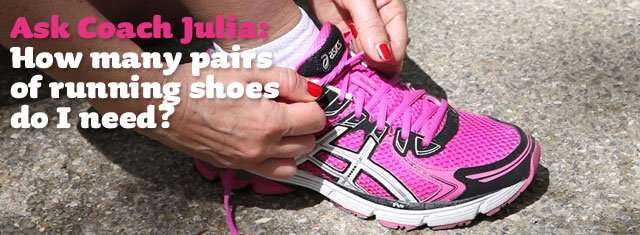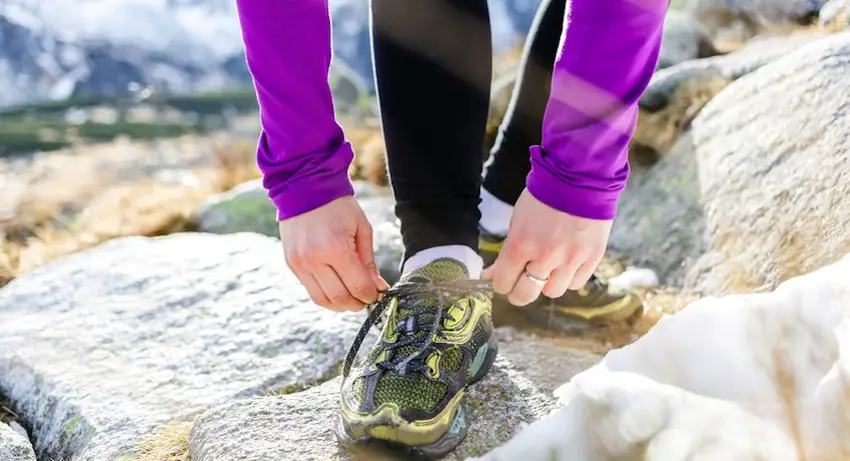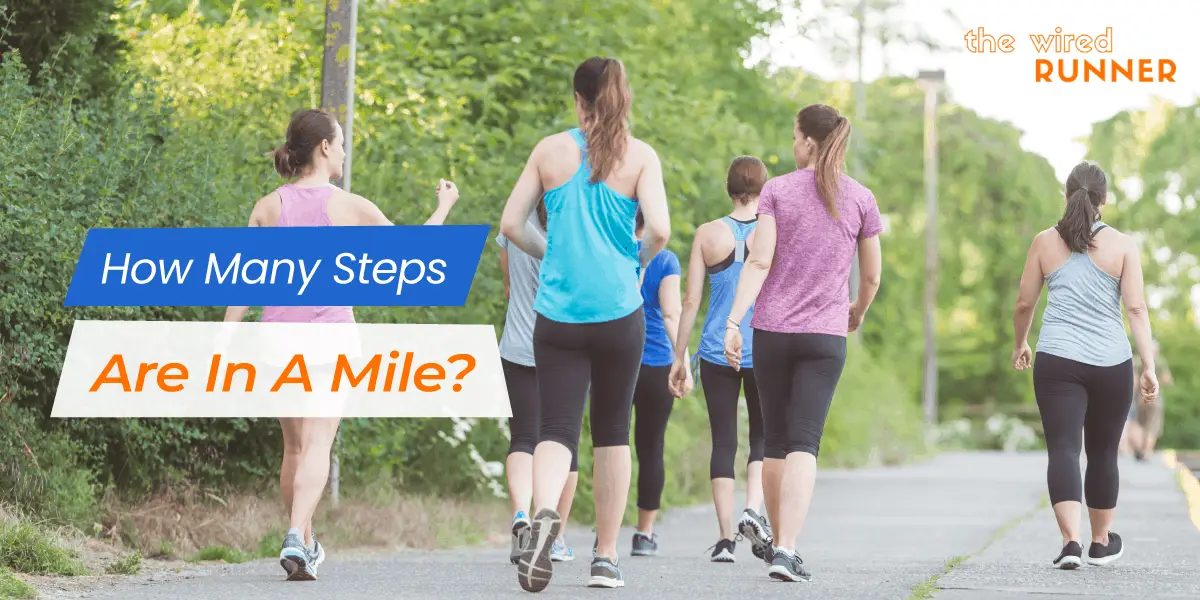You Constantly Need To Adjust
You have to make excessive adjustments to make the shoe comfortable within the first mile or two. You should consider replacing your running shoes if you constantly need to adjust the laces to be tighter or to open them up, if your toes go numb or are chafing or if you develop hot spots or sore spots on your foot.
Eliminate Potential Muscle Imbalances
If your body is used to running in the exact same shoe all the time, but its not the perfect shoe for you then it will compensate for muscle imbalances, which creates stride issues and eventually pain.
This study showed those rotating running shoes through at least 2 models were 39% less likely to get injured.
And here Saucony goes in to a more detailed explanation:
Our bodies are best at doing one thing: Adapting to the environment and the stresses we expose them to. For runners this means that our bodies adapt to the stress of running, becoming fit and strong. But because running is so repetitive, it can occasionally overstress our bodies, especially when we increase training intensity.Every step loads the same tissues in the same way as the previous step. Running shoes can affect how the stress of running is distributed within the tissues of your body. By wearing different shoes on different days, you may avoid overloading any one muscle, tendon, bone, or ligament while simultaneously strengthening others.
How Do You Know When Running Shoes Are Worn Out
Tracking apps like Strava allow you to record which shoes youve worn for each run, so even if youre using more than one pair you know how many miles each one has done.
Top tip: write the date you bought your shoes on the inside and use that as a guide.
However, if you dont know how long youve had your shoes or how far youve gone, here are some signs that it might be time for a new pair:
You May Like: How To Get A Dirt Stain Out Of White Shoes
When Should You Replace Casual Shoes
Casual shoes are everyday footwear that you wear during errands and perhaps even to work. When you should replace them depends significantly on the quality, how you treat them and how often you wear them.
If you wear your casual shoes three to four times a week, look to replace them once a year. If you drive a lot or, in general, dont walk everywhere, they may last longer. But of course, watch out for the indicators above.
Enjoy More Cushioned Running Shoes

When I worked onsite at New Balance creating their wear test program, the shoe engineers told me that cushioned shoes can need up to 24 hours to fully bounce back and thus stay in the proper form to support your foot.
Thus giving them time to return to their full cushion makes them feel better, prevents injury and prolongs use. Bonus points because its wonderful when your shoe just feels softer too!
If you love cushion like I do, checkout these Nike Epic React!
While you can add in some insoles that provide cushion, this doesnt mean youve corrected the actual break down of the shoe.
As the functional breakdown occurs, it will actually change the way your foot lands, which changes your stride.
Also Check: Naot Shoes For Plantar Fasciitis
When To Replace Your Running Shoes
You may be asking yourself “When should I replace my running shoes?”
There are a five factors that should be taken into cosideration and will determine when you should replace your running shoes:
That’s a basic summary, so let’s dig into them in a bit more detail…
Join us for a free live online presentation of the…
Becoming A ‘senior Runner’
There is a long history of people, many would call senior runners, continuing to run or starting to run through their 60s and into their 70s.
- Some have been life-long runners.
- Some have been doing other sports, which as they get older they find they are no longer enjoying, but the simplicity of running fills the exercise gap.
- Others just feel the need, or have been advised for whatever reason that some simple exercise will benefit their long-term physical and mental health.
Don’t Miss: Hey Dudes Track My Order
How Do You Tell When Your Shoes Are Worn Out
First, the ability of all running shoes to cushion the ride is reduced by use. As you run for weeks and months in a particular shoe and accumulate a couple of hundreds of miles, the shoe will show wear and tear. In that respect, running shoes arent any different than your car tires as the limiting factor is number of miles.
Running shoe wear shows up first on the outsole before the midsole , but the midsole usually wears out first. Again, the rate at which your shoes wear out differs from, runner to runner. For example, outsoles wear down on pavement faster than on dirt trails, grass fields or treadmills because roads and sidewalks are harder and much more abrasive than a softer surface. So there will be less wear and tear on shoes if you stick to dirt trails or the treadmill, but the impact forces are about the same so the cushioning will still eventually wear.
The most important component of any running shoes is its midsole. This is where most of the cushioning takes place. Almost all midsoles are made of lightweight foam. Mizunos proprietary midsole foam is called U4ic or U4icXboth of which are a light, cushy and durable material.
But the midsole cushioning material gets compressed with each step on every run. Although the midsole foam springs back within a couple of hours after a run, daily running compresses this foam. This is called compression set.
% Off Running Shoes At Amazon
Twenty years ago in 1994 when I was studying to become an athletic trainer the magic number for replacing a pair of running shoes was 300-500 miles. Four years later during medical school the information we were again being taught was that if runners were having any type of injuries or issues one of the first places we were to look were how many miles they had on their shoes. Anything in the range of 300-500 miles was considered old and needed replaced. Fast forward to 2014 and what we find is that nothing has changed in regards to how many miles you should accumulate on your shoes before tossing them. It has remained 300-500 miles. How can this be? With all of the advancements in running shoes and technology how is it not possible that we cant find a shoe to last more than 300-500 miles. As crazy as this may sound, its a territory that no one has revisited since 1985 when the paper written on how many miles a running shoe can obtain before breaking down.
Cook SD, Kester MA, Brunet ME. Shock absorption characteristics of runningshoes. Am J Sports Med. 1985 Jul-Aug 13:248-53.
Obviously the engineering and materials have improved over the past twenty years so why hasnt the life span of a shoe increased ? Some say they have but the manufacturers refuse to publish the data on the absorption and breakdown process because customers would be requesting refunds claiming their shoes have failed too early.
-Dr. Nick
Read Also: Hey Dude Shoe Cleaner
High Mileage On Your Shoes
In addition to tracking the number of miles you have on your shoes, where you run is also an important consideration. If you run on rough roads or trails, you’ll need to replace your shoes sooner than if you do primarily treadmill running.
If you have trouble tracking when you bought your shoes and how many miles they have on them, write the date on the inside of your shoe when you buy them. By knowing the exact date you bought them and about how many miles you run per week, you should be able to roughly estimate how many miles you’ve run in them.
If you take good care of your running shoes , you may be able to get away with replacing your shoes at the higher end of the recommended mileage range.
Running After 70 Years Old And Beyond
There is no age limit to running. We each age differently, and some of us have to deal with different issues. To be able to continue running regularly in your seventies and enjoy it, you have to be realistic about your capacity. Your main aim should be to maintain a consistent routine, without getting too tired or getting injured.
Read Also: Are Hotter Shoes Sold In Us Stores
Your Shoes Are Showing Signs Of Shoe Death
Perhaps you chose the right running shoes once upon a time, but even good things come to an end. No matter how perfect your running shoes were when you first bought them, they will reach their maximum mileage sooner or later.
For most people, running shoes have optimal cushioning between 300 to 400 miles. Heres how to spot the signs of shoe death that tell you its time to replace your running shoes:
Can You Make Your Running Shoes Last Longer

Eventually, even the best shoes wear out, and youll have to call it quits. But you can prolong the magic by taking good care of them while youre together.
First, use your running shoes only for running. Walking or standing for long periods, gym training, and other activities involving lateral motion create an unusual wear pattern which breaks down the shoes faster. Performance running shoes are designed for one thing, and theyll have the longest life if thats all they do.
Also, while we dont generally recommend dishonesty, we do suggest cheating on your favorite trainers. Keep two pairs in rotation, and alternate so you never do consecutive runs in the same shoes. Youll allow time for each pair to completely dry and the cushion to reset between runs.
And on the note of drying: make sure you give your shoes some TLC after a rainy day. If you run in a downpour, through puddles, or in some other condition that soaks or submerges your shoes, take a few minutes to stuff them with newspaper and leave them in a warm place overnight. Avoid heat , as it can ruin the synthetic materials in the upper.
Try not to soak them, and just clean the surface. Stuff shoes with newspaper and allow to air dry. Voila. Squeaky clean .
Try not to soak them, and just clean the surface. Stuff shoes with newspaper and allow to air dry. Voila. Squeaky clean . Learn more about cleaning your shoes here.
Take it for a 90-day trial run. If youre not happy, were not happy.
Also Check: Vans Work Boots Steel Toe
Which Running Shoes Are Better
Lighter running shoes are better in the long run. If you’re looking for a new running shoe, go for a lighter shoe for long-term results. Lightweight running shoes provide less stress, less fatigue and a faster recovery. Wearing light shoes and running with gentle steps can be a big benefit for a runner of all skill levels.
Work Out What Works For You
As youll be able to tell by now, extending the lifespan of your running shoes requires you to pay attention to a lot of things that you may never have heard of before. But there isnt a one-size-fits-all solution for keeping your shoes in optimal condition while you push the boundaries of your performance levels.
You need to know your goals you need to know which surfaces you prefer to run on you need to consider how you store your shoes when theyre not in use you have to consider the weather conditions. You have to clean them properly!
And once youve made your mind up, you now have all of the knowledge you need to tailor the perfect plan for yourself. But you need to plan your running shoes maintenance if youre going to get it right.
So, the best advice I can give is just to be aware of the running conditions as well as your running habits, monitor how many miles youre running, and make a plan to ensure that youre getting the most out of your running shoes and make sure to change them when theyve reached the end of their lifespan.
Recommended Reading: Hey Dude Cleaning
Dry Your Shoes Thoroughly And Quickly
And, if you have been running through wet trails, during or after a rainstorm, you need to ensure that you dry your shoes properly. Allowing your shoes to soak not only makes them smell bad, but theyll also start to feel uncomfortable. And, worse yet, the drying out process, if not handled properly, could lead to deterioration of the materials in your shoes.
To dry your shoes out, remove the insoles and fill your shoes with a paper towel or newspaper. Set them aside so that they dry properly and the moisture is absorbed into the paper. Let them dry for a few hours or overnight, remove the paper, and theyre ready for use again.
Read Also: What Does Wide 4e Mean
How Often Should You Replace Your Running Shoes
Its generally accepted that the standard lifespan of road running shoes is somewhere between 300 miles and 500 miles, or around 500-800km if youre that way inclined, and lightweight shoes tend to be somewhere between 250 and 300 miles. So if youre running 20 miles per week, youll probably need to replace them after 4-6 months.
However, where you fit in that range depends on a few things:
You May Like: Shoes 4e Meaning
Use Your Running Shoes For Running
This tip comes from Fleet feet: Finally, you should only use your running shoes for the surfaces they were designed for, and you shouldnt use them for anything besides running. One way to lose track of your mileage is to be wearing your shoes at other times, which will contribute further towards their deterioration. And if youre using track shoes for road-running, they simply wont last as long because they werent designed for that surface.
So if youre looking to get the most miles out of your shoes, these simple tricks dont require much effort and will make life a lot easier for you while also saving you some money in the long term.
Tricks To Make Your Shoes Last Longer
In the interest of athletic performance and injury prevention, its for the best that runners dont keep wearing a shoe well past its prime. But everyone wants to get their moneys worth out of good gearand if were honest, it can be tough to retire a pair that have fond memories tied to them. To that end, there are a few simple ways to make your favorite kicks last a bit longer.
You May Like: Most Comfortable Heels For Flat Feet
How Long Before You Have To Replace Running Shoes
John Davis
Running is the best form of exercise there is.
Okay, so we may be a little bias, but running is definitely one of the least expensive ways of getting fit, especially as all you need are good running shoes and you are off.
Weve all heard of the recommendations by shoe companies and running stores about running shoes when to replace and after 400-500 miles miles we should buy a new pair of running shoes to avoid injury.
But its also likely that you know other runners who get endless mileage out of a single pair of shoes with no apparent ill effect.
Today we are going to look into why you need to replace running shoes, and what to look for to know how often to replace your running shoes in the future. We are not affiliated with any company, so you know we are telling you the truth. You may be surprised with what the research found about which is the best shoe brand!
How To Tell If Running Shoes Are Worn Out

Sometimes the eyeball test will tell you all you need to know about the age of your shoes, but other times worn out shoes might not be so obvious. If your shoes arent telling you theyre ready to be retired, your body might provide clues.
Here are some signs that your running shoes are ready for a slower life of mowing the lawn:
- Your shoes will feel flat. The bouncy midsole foam in a pair of new shoes will absorb impact associated with running, saving your feet and joints from taking a pounding. As your shoes age, though, the foam loses some of its ability to rebound, like if you put a brick on top of a marshmallow.
- Nagging aches and pains. Hard workouts or increased mileage can make you feel sore the next day, but if little pains persist even after a normal run, it might be time for a refresh.
- Worn soles. The outsoles of your running shoes have tread just like the tires on your car, which helps cushion your landings and grip the pavement. But the ground is abrasive, especially if you primarily run on concrete and asphalt. If your soles sport bald patches and excessive wear, they wont serve you as well as a new pair.
- Uneven wear. If your worn soles are uneven, this can signal an even greater problem than just needing new shoes. It could mean you need different types of shoes, like a pair of the best stability shoes, to better support your feet. If that’s the case, take them with you when you go to get fitted for your next pair.
You May Like: When Did Hey Dude Shoes Come Out
